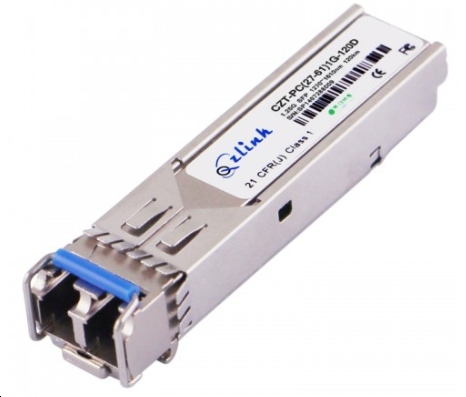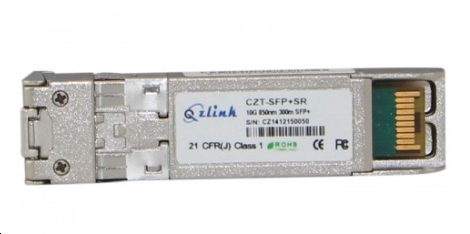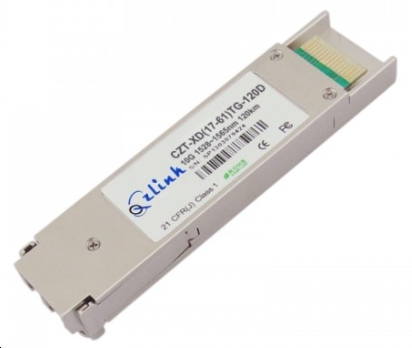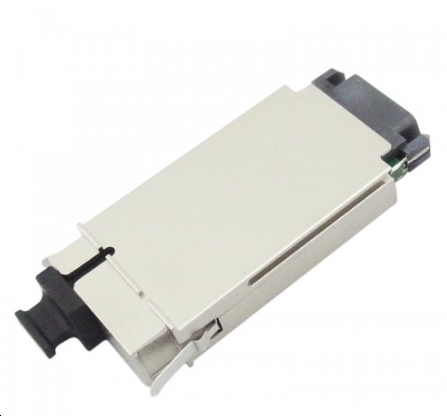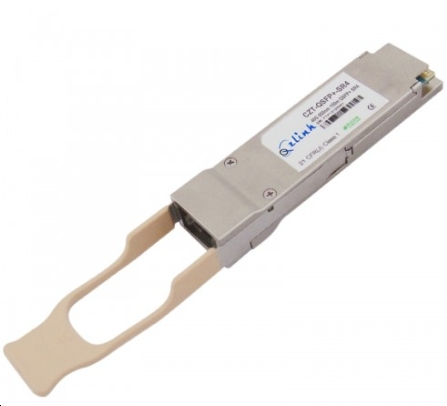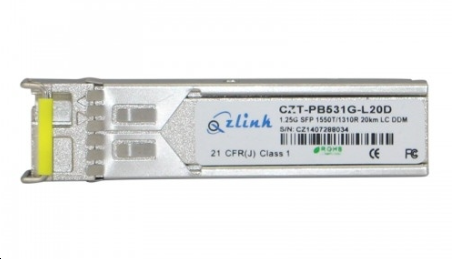Nowadays, as the core optoelectronic device in the optical communication network, the types of the optical transceiver module is increasing, and its functions also becoming more and more complicated. Different types of optical modules are emerging such as SFP, SFP +, XFP, QSFP, GBIC and BIDI. We’ll take SFP optical module which is commonly used in the market as an example to talk about the difference among these similar optical modules.
SFP optical module, which also known as small package pluggable optical module, and used in the telecommunications industry and optical communications. The interface of the SFP optical module is LC which the size is small, suitable for high-density cabling environment. Meanwhile, SFP has specifications that a variety of network electronic device vendors to support, mainly to support Gigabit Ethernet and fiber-optic network communications. The electrical interface of it is 20pin Gold-finger, data signal interface is basically same as SFF module’s.
The difference between SFP and SFP+
The appearance of SFP+ is similar with SFP, it also uses a 20-pin Gold-finger electrical interface. Unlike SFP, SFP + optical modules support a maximum rate up to 10 Gbps, while SFP mostly only support 1Gbps.
The difference between SFP and XFP
Compared to SFP, XFP is mainly used in miniaturization and low-cost 10G solution, and the size of XFP is larger than SFP, the transmission distance up to 80km. Currently, most of XFPs are replaced by SFP +.
The difference between SFP and GBIC
GBIC stands for Gigabit Interface Converter, which means a Gigabit interface converter that converts a gigabit electrical signal into an optical signal. GBIC is about twice the size of the SFP, but the function is similar with the SFP optical module, now a large portion of the market share is replaced by SFP optical modules.
The difference between SFP and QSFP
QSFP uses a four-channel SFP interface, which is to meet the market needs for higher density pluggable solutions. It supports the SFF-8436 MSA and IEEE802.3ba 40GBASE-LR4 protocols. The transfer rate is up to 40 Gbps, far beyond of SFP, and mainly used for switches, routers and host adapter bus.
The difference between SFP and BIDI
BIDI is a single fiber bi-directional optical module, and that is using wavelength division multiplexing technology to achieve a two-way optical fiber signal transmission, and therefore there is only one fiber optic jack. The conventional SFP optical module is dual-fiber with two fiber-optic jacks. BIDI optical modules need to be used in pairs, the biggest advantage of BIDI is to save fiber resources and reduce costs.
Now, we have briefly introduced the difference between SFP and SFP+, XFP, QSFP, GBIC, BIDI, do you have a profound understanding of it? If you want to learn more about it, you always welcomed to check out on Cozlink (cozlink.com). You are not only can access to communications-related knowledge, but can find many excellent performance and inexpensive communications products as well.
